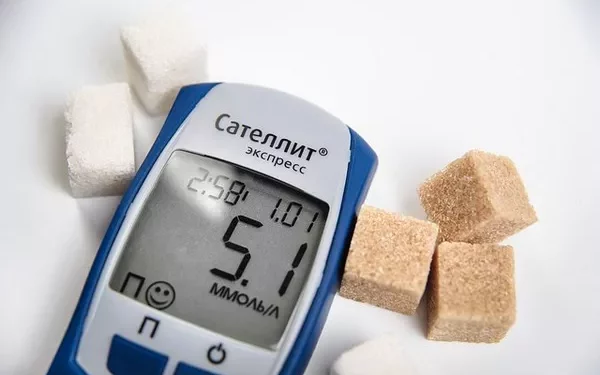Blood sugar, or blood glucose, is the body’s primary energy source, fueling everything from muscle contractions to brain function. In healthy individuals, blood glucose levels are tightly regulated by a complex interplay of hormones—most notably insulin. However, when this regulation becomes impaired, as in diabetes or prediabetes, monitoring blood glucose becomes an essential part of maintaining overall health and preventing long-term complications.
While fasting glucose levels often receive the most attention in diagnostic contexts, non-fasting glucose readings are equally important for understanding how the body processes sugar in real-world, everyday conditions. These readings can offer a window into how your body responds to meals, stress, physical activity, and more. In clinical practice, they play a vital role in guiding treatment, fine-tuning medication dosages, and gauging lifestyle intervention effectiveness.
This article offers an in-depth exploration of non-fasting glucose levels—what they are, what is considered normal, how they are measured, and what influences them. We will also delve into the significance of non-fasting glucose in diagnosing diabetes and managing blood sugar day-to-day.
The Difference Between Fasting and Non-Fasting Glucose
To fully understand non-fasting glucose, it helps to begin by contrasting it with fasting glucose:
Fasting glucose is measured after at least 8 hours without food or drink (other than water). This test assesses the baseline level of glucose in your bloodstream without the influence of recent dietary intake.
Non-fasting glucose (sometimes referred to as random blood sugar) can be measured at any time of day, regardless of when you last ate. It reflects the current level of sugar in the bloodstream and is heavily influenced by recent meals, physical activity, medications, and stress levels.
Because non-fasting glucose readings vary more widely than fasting ones, they are more challenging to interpret—but they also offer valuable information about your body’s day-to-day glucose management.
What Is a “Normal” Non-Fasting Glucose Level?
For healthy individuals without diabetes, non-fasting glucose levels typically fall within the following range:
70 to 140 mg/dL (3.9 to 7.8 mmol/L): This is considered a normal range for most people, even after eating.
Postprandial glucose (1–2 hours after a meal): Should ideally be less than 140 mg/dL in healthy individuals.
After consuming food, especially meals high in carbohydrates, glucose levels rise as the digestive system breaks down carbohydrates into sugar. Insulin is then released from the pancreas to facilitate glucose uptake into the cells, gradually bringing levels back down to baseline. In healthy individuals, this process is efficient and tightly regulated.
However, in people with insulin resistance or impaired insulin production, this post-meal glucose surge can linger, sometimes reaching levels that are well above the normal threshold.
Non-Fasting Glucose in People with Diabetes
For individuals with diabetes, the target range for non-fasting glucose is broader and more flexible, depending on personal factors such as age, comorbidities, pregnancy status, and the duration of diabetes. The American Diabetes Association (ADA) provides general guidelines:
Before meals (preprandial): 80–130 mg/dL (4.4–7.2 mmol/L)
1–2 hours after meals (postprandial): Less than 180 mg/dL (10.0 mmol/L)
It’s important to note that these are target ranges, not absolutes. A single reading above or below this range doesn’t necessarily mean something is wrong. Instead, patterns over time provide the clearest insights into glucose control.
The Diagnostic Role of Non-Fasting Glucose
Non-fasting blood sugar can be used for diabetes screening and diagnosis in certain cases. For example, a random plasma glucose test is one of the diagnostic tools used for diabetes. According to the ADA:
A non-fasting glucose level ≥200 mg/dL (11.1 mmol/L) with symptoms of hyperglycemia (increased thirst, urination, weight loss) is diagnostic of diabetes.
However, because non-fasting glucose levels fluctuate, one abnormal reading usually isn’t enough to confirm a diagnosis. Additional tests—such as a fasting plasma glucose (FPG), oral glucose tolerance test (OGTT), or hemoglobin A1c—are typically required for confirmation.
Factors That Influence Non-Fasting Glucose Readings
Non-fasting glucose levels are dynamic and influenced by several variables:
1. Meal Composition and Timing
Carbohydrates: Foods high in simple carbs (white bread, sugar, juice) cause a rapid spike in glucose.
Fiber and Fat: Meals high in fiber, protein, and healthy fats can slow glucose absorption, leading to a more gradual rise.
Meal timing: A reading taken 30 minutes after a meal will often be higher than one taken after 2 hours.
2. Insulin Sensitivity
In people with insulin resistance (as in type 2 diabetes or metabolic syndrome), glucose may remain elevated for longer after meals.
Individuals with type 1 diabetes may see unpredictable spikes or drops depending on insulin dosage and timing.
3. Physical Activity
Exercise increases insulin sensitivity and promotes glucose uptake by muscles, often leading to lower glucose levels—even hours after activity.
4. Stress
Psychological stress triggers the release of cortisol and adrenaline, which can raise blood glucose by stimulating glucose production in the liver.
5. Illness or Infection
Acute illness increases metabolic demands and stress hormone levels, often leading to temporary elevations in blood glucose.
6. Medications
Steroids, beta-blockers, and certain antipsychotics can raise glucose levels.
Insulin and oral hypoglycemics lower glucose, and if taken without food, can cause hypoglycemia.
Non-Fasting Glucose in Special Populations
Pregnancy (Gestational Diabetes)
Women are screened for gestational diabetes during pregnancy using non-fasting glucose challenges. The 50-gram glucose challenge test (GCT) is administered regardless of fasting status:
A level of ≥140 mg/dL after one hour prompts further testing with a full oral glucose tolerance test.
Children and Adolescents
Children without diabetes usually maintain glucose within a tighter range. After meals, glucose rarely exceeds 140 mg/dL. Persistent elevations, particularly in overweight children, may suggest insulin resistance or early-onset type 2 diabetes.
Older Adults
Non-fasting glucose targets may be adjusted based on life expectancy, cognitive function, and comorbidities. Avoiding hypoglycemia is often prioritized over tight glucose control in this population.
Continuous Glucose Monitoring (CGM) and Non-Fasting Glucose
CGM devices have revolutionized how non-fasting glucose is tracked. These systems measure interstitial glucose levels every few minutes, offering a continuous stream of data. This allows for more accurate tracking of post-meal spikes, overnight lows, and the effects of stress or exercise.
Key metrics from CGM relevant to non-fasting glucose:
Time-in-Range (TIR): % of time spent between 70–180 mg/dL
Glycemic variability: Measures fluctuations in glucose throughout the day
Time-above-range: Duration when glucose is above target, typically >180 mg/dL
These tools help both patients and clinicians refine dietary, medication, and lifestyle strategies to achieve better glucose control throughout the day.
How to Interpret Non-Fasting Glucose Readings
Understanding what a reading means depends heavily on context. Consider the following:
Timing: Was the reading taken after a meal? How long after?
Activity: Have you recently exercised? Were you resting?
Symptoms: Are there signs of hypoglycemia (sweating, shakiness) or hyperglycemia (fatigue, thirst)?
Consistency: Is this an isolated result or part of a trend?
A reading of 165 mg/dL two hours after a carb-heavy meal might be acceptable in someone with diabetes, but a reading of 200+ mg/dL three hours post-meal might signal poor glucose control and warrant adjustments.
Improving Non-Fasting Glucose Levels
Eat Balanced Meals: Combine carbs with protein, healthy fats, and fiber to reduce the speed of glucose absorption.
Monitor Portions: Be mindful of carb quantities, especially with rice, pasta, and bread.
Engage in Regular Activity: A brisk 20–30-minute walk after meals can lower postprandial glucose.
Take Medications as Prescribed: Skipping doses or mistiming insulin can lead to erratic glucose levels.
Stay Hydrated: Dehydration can falsely elevate glucose readings and impair glucose metabolism.
Manage Stress: Meditation, therapy, and adequate sleep can stabilize hormones that influence blood sugar.
Common Misconceptions About Non-Fasting Glucose
Myth 1: “Only fasting glucose matters.”
Truth: Non-fasting readings are just as important, especially in capturing real-time glucose responses.
Myth 2: “All high readings mean diabetes.”
Truth: One high reading, especially after a large meal or during stress, doesn’t confirm diabetes. Persistent patterns do.
Myth 3: “If my glucose is normal after eating, I’m safe.”
Truth: Some individuals with early insulin resistance may still have normal non-fasting readings. Hemoglobin A1c and OGTT offer broader insights.
Final Thoughts:
Non-fasting glucose is not a static value—it reflects the complex dance between your body’s insulin response, dietary intake, activity, stress, and overall health. For healthy individuals, it should remain below 140 mg/dL after meals and generally hover between 70–140 mg/dL throughout the day. For people with diabetes, staying within target ranges (often <180 mg/dL post-meal) is essential to avoid complications.
What makes non-fasting glucose especially valuable is its practicality. Unlike fasting tests that rely on strict conditions, non-fasting glucose mirrors your body’s everyday challenges and how well it meets them.
In clinical practice, non-fasting glucose readings should never be viewed in isolation. They’re part of a broader toolkit that includes A1c, fasting glucose, OGTT, and CGM data. With consistent monitoring, pattern recognition, and lifestyle adjustments, individuals can use non-fasting glucose as a powerful tool to understand and manage their metabolic health.
Related topics:
What is a Lethal Blood Sugar Level?
























